

Matt Campbell
2025 Porsche 911 Carrera T review
6 Days Ago
With class-leading outputs and heaps of standard kit, the entry-level Ford Escape presents a convincing alternative to the mid-size SUV elite.
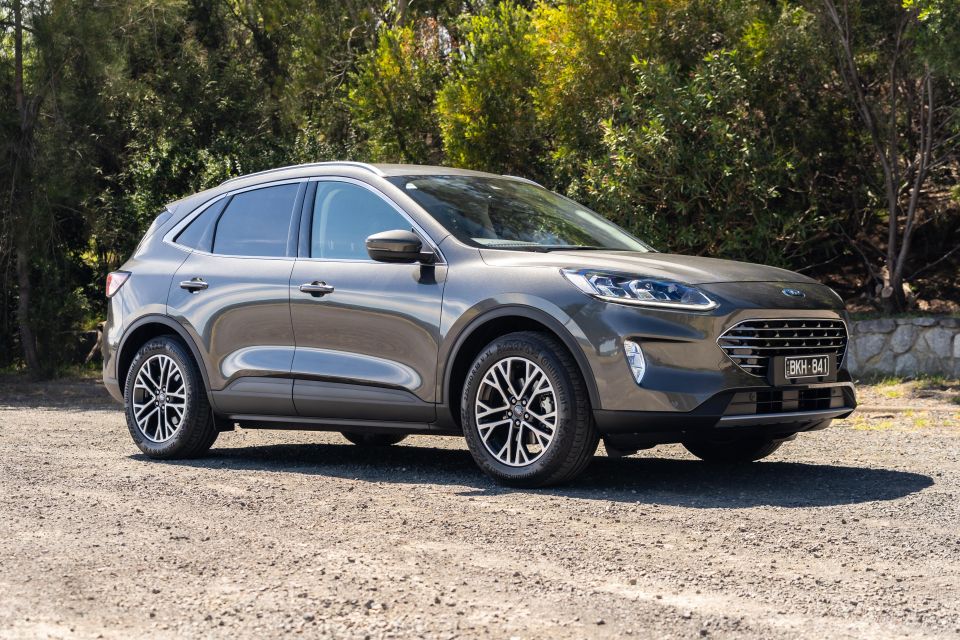
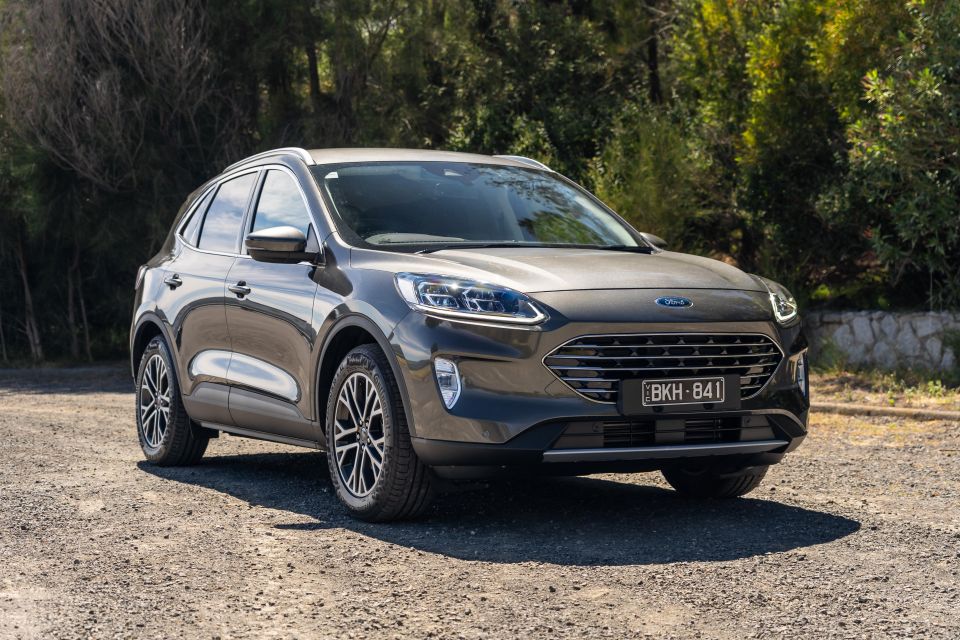

Marketplace Editor
New from
$28,990
excl. on-roads

Marketplace Editor
New from
$28,990
excl. on-roads


Marketplace Editor
New from
$28,990
excl. on-roads

Marketplace Editor
New from
$28,990
excl. on-roads
Quickly see how this car stacks up against its competition. Select any benchmark to see more details.
Where expert car reviews meet expert car buying – CarExpert gives you trusted advice, personalised service and real savings on your next new car.
The medium SUV segment is easily the biggest and most important in Australia right now. One in five new cars sold Down Under are mid-sized SUVs.
Despite accounting for around 20 per cent of all sales nationally in 2020, Ford is something of a small player in the segment – unusual, given it’s one of the world’s big carmakers.
The previous Escape never quite made its mark in Australia perhaps the way it deserved to, despite its European origins, sporty drive, and high levels of available tech.

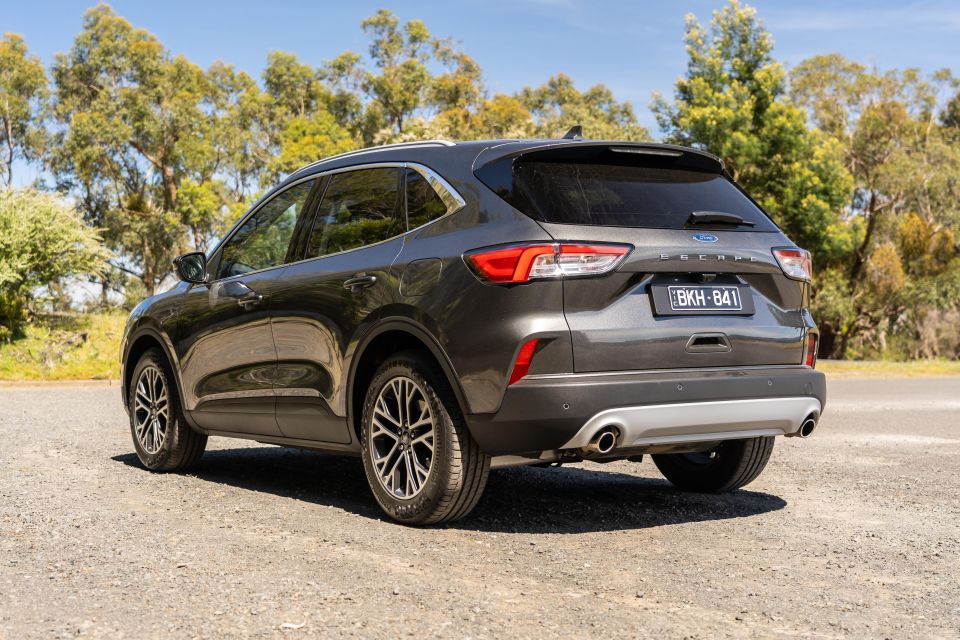
That might be about to change. The Blue Oval has just introduced its all-new Escape featuring an overhauled design, a new-generation platform, and a revised range and pricing structure as it pushes to cash in on ever-growing demand for mid-sized crossovers.
It will also be the first vehicle in Ford’s local portfolio to offer an electrified option in the form of a plug-in hybrid, though it’s now been delayed until late in 2021.
So, does the 2021 Ford Escape deserve to be more than a 1.0 per cent player in Australia’s biggest vehicle segment? We have the entry-level model on test here to find out.
The base model in the Escape range is simply called the ‘Escape FWD‘, and is priced from $35,990 before on-road costs – though it’s currently being offered for $36,490 drive-away.
While that seems like a very high price of entry for a mainstream product, the 2021 Ford Escape FWD is more in line with mid- and high-spec versions of rival models, both in terms of features and powertrain.
Our tester’s Magnetic Grey premium paint adds a further $650. There’s also the option of a gesture-controlled electric tailgate ($1300) and a Technology Pack ($1000) which adds adaptive LED headlights and a head-up display – though neither of these options were fitted to the vehicle you see here.
If you want something a little sportier, the Escape ST-Line FWD is $1500 more at the current drive-away price of $38,990. Read our review of that car here.
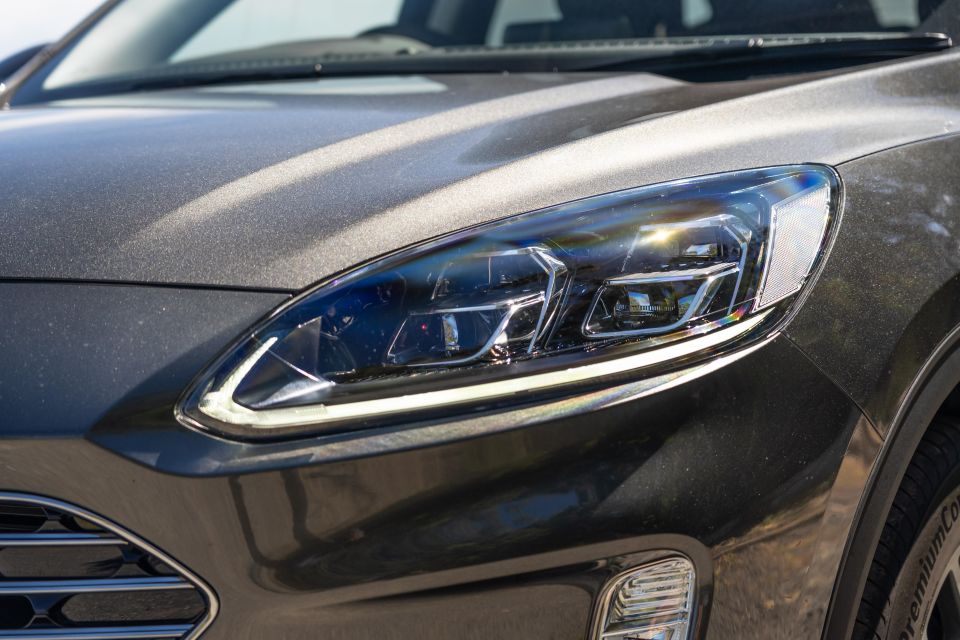
Quite a lot.
Despite being the base model, the Escape FWD comes loaded with driver assistance tech as well as most of the comfort features you’d expect from this price point.
In Europe, our model is more in line with the Kuga Titanium specification, which now sits alongside the ST-Line as a luxury-focused option below the flagship Vignale.
Highlights include:
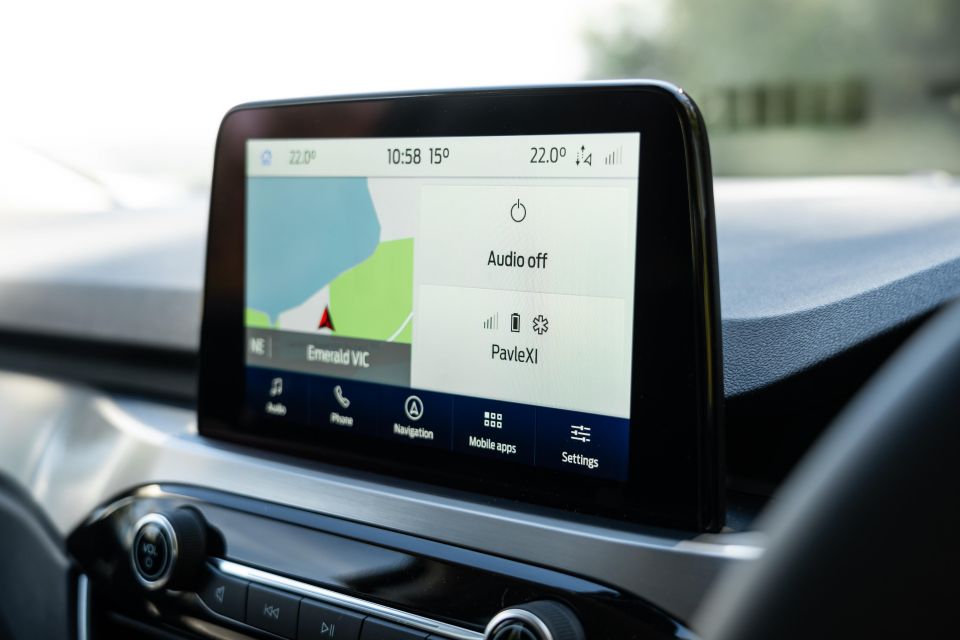
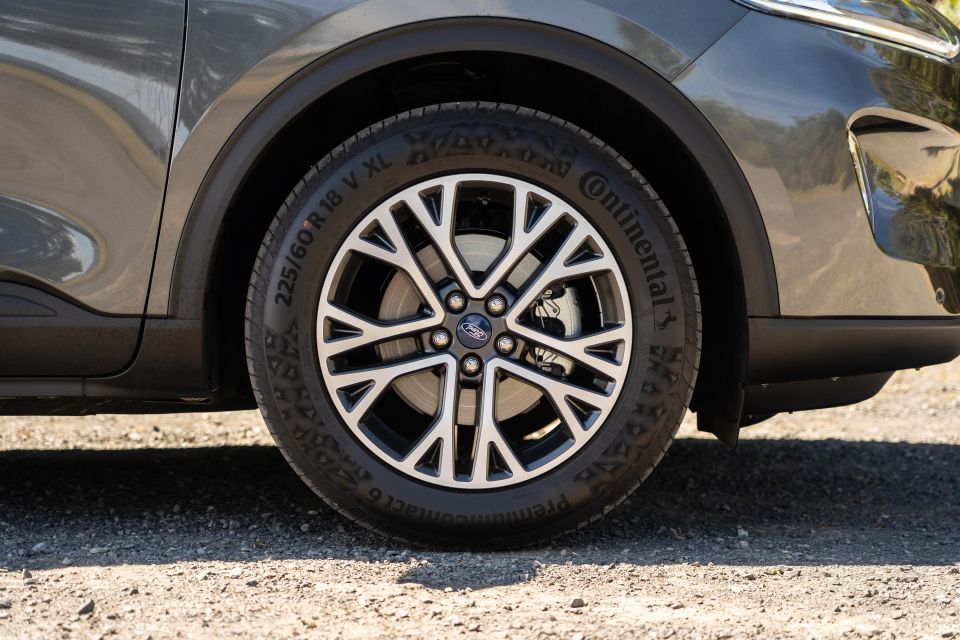
All versions of the Escape also come standard with autonomous emergency braking with pedestrian and cyclist detection, adaptive cruise control with lane centring and stop/go, blind-spot monitoring with rear cross-traffic alert, lane-keeping assist with lane departure warning, and traffic sign recognition.
Ford’s new SUV also comes as standard with one of the most powerful engines in its class – a 183kW/387Nm 2.0-litre ‘EcoBoost’ four-cylinder turbo petrol engine. We’ll touch on that more in a bit.
The Escape FWD is very competitively equipped. While it may lack some of the pizzazz of some rivals in terms of design or even features like leather-accented upholstery, few rivals offer the full suite of driver assist technologies across the entire range and none can match the Escape’s engine outputs.
Keep in mind, also, the Escape is sourced from Ford Europe’s Valencia factory in Spain.
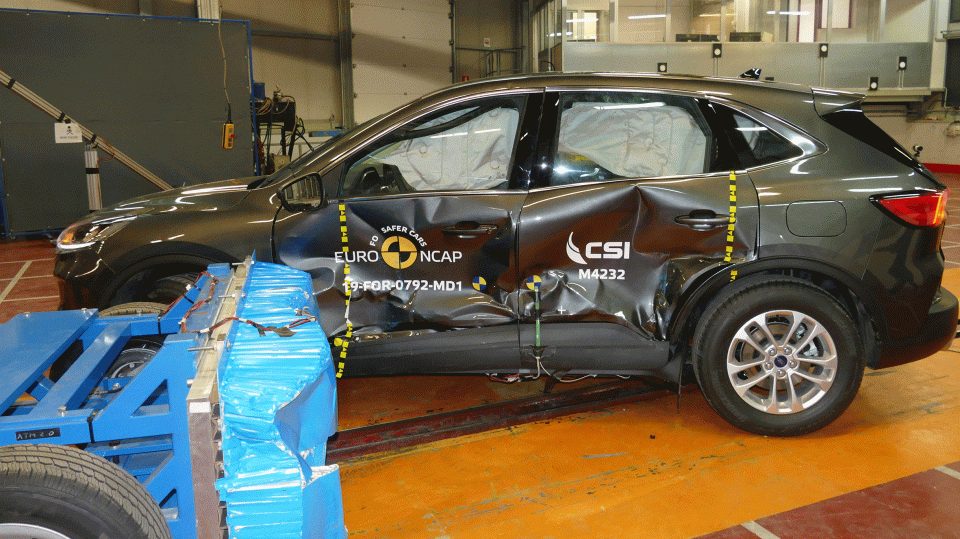
According to ANCAP, yes. The Escape was recently awarded a five-star safety rating with 2019 datestamp, based on tests conducted by Euro NCAP last year.
The Escape, known in Europe as the Kuga, scored 92 per cent for adult occupant protection, 89 per cent for child occupant protection, 82 per cent for vulnerable road users and 77 per cent for safety assists.
ANCAP praised the Escape’s AEB performance, particularly for pedestrians and cyclists.
“Close to full points were scored for its ability to detect and avoid or mitigate collisions with pedestrians and cyclists across a range of day-time and night-time scenarios through its standard-fit autonomous emergency braking (AEB) system,” said Rhianne Robson, communications director for ANCAP.
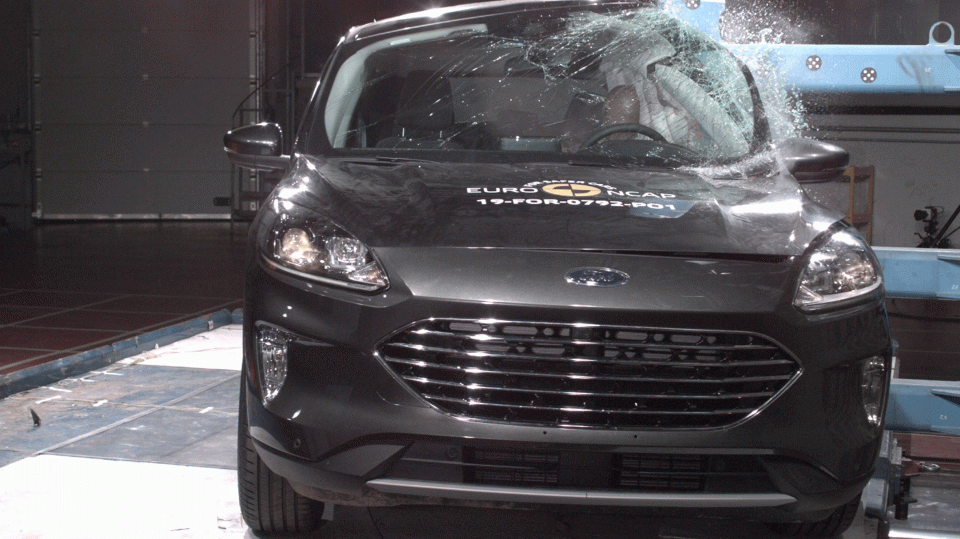
Dual frontal, side chest-protecting and side head-protecting (curtain) airbags are standard on all Escape models.
As noted earlier, the entire range is equipped with autonomous emergency braking (City, Interurban and Vulnerable Road User), lane-keeping assist, lane departure warning and emergency lane keeping.
Other standard driver assistance technologies include traffic sign recognition, blind-spot monitoring, driver impairment monitor, tyre pressure monitoring, emergency assistance, and adaptive cruise control with an intelligent speed limiter.
The Escape’s five-star rating applies to all petrol variants, while the petrol-electric plug-in hybrid is unrated for the time being.

If you’re familiar with the Focus, Fiesta, or even the Puma, the overall design and layout of the Escape’s cabin is rather familair.
Will it win any design awards? Probably not, but there’s a functional and refined cabin feel that to this reviewer is very Volkswagen – it’s basic but well-built.
The upper and middle sections of the dash and front doors are trimmed in soft-touch materials, while the leather steering wheel feels good in the hands. The inclusion of padded knee rests at the base of the centre console are a nice touch, even if the fake stitching doesn’t look super convincing.
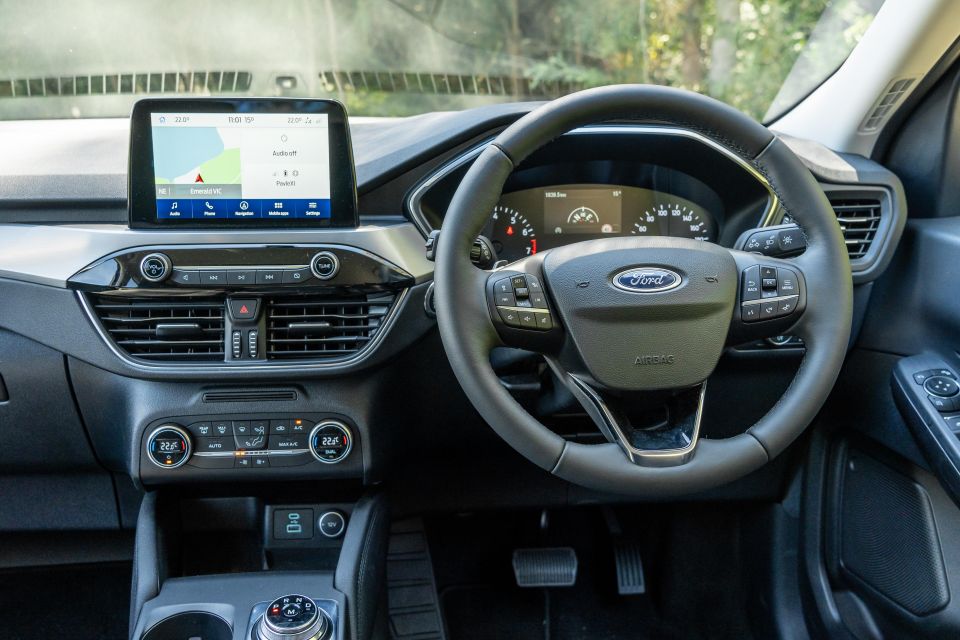
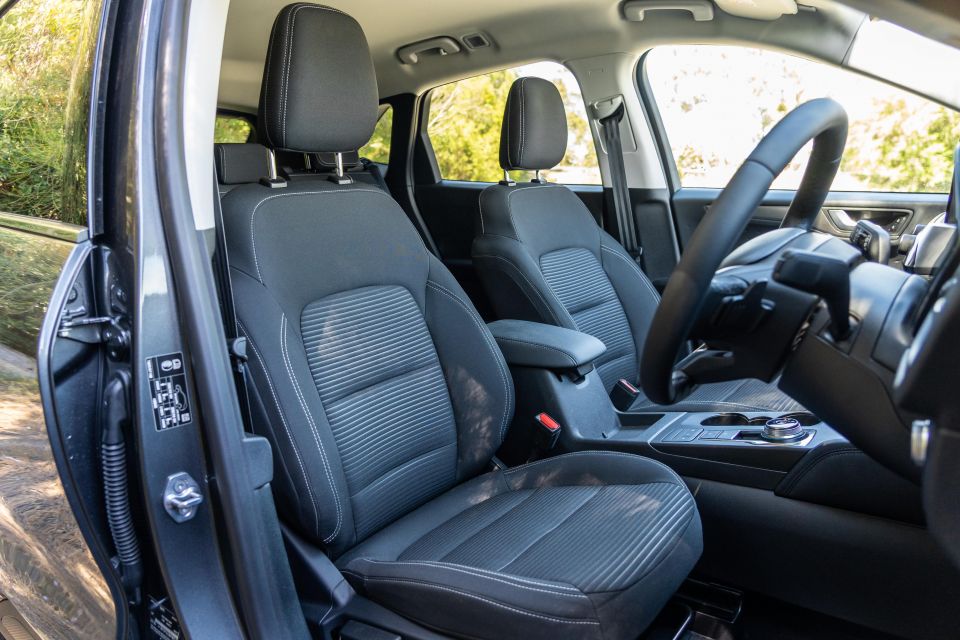
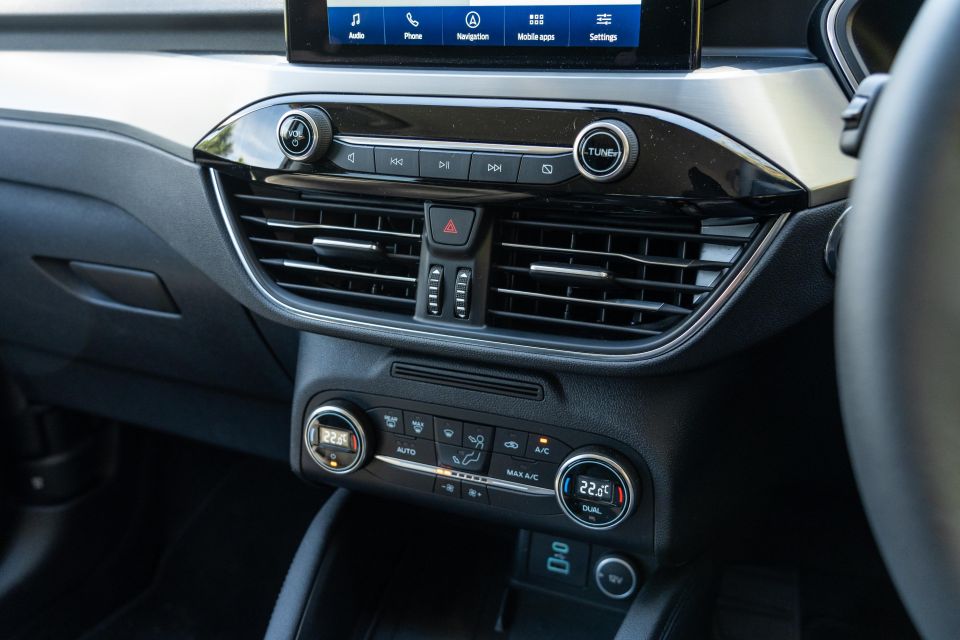
Comfort up front is good. The seats may be a little flat and lack strong bolstering but it means people of most shapes and sizes should fit just fine. There’s good back and under-thigh support and there’s a good range of adjustment in the driver’s seat and steering wheel, albeit manual.
You sit quite high in the Escape, with a commanding drive position which is far more SUV-like compared to some more car-like competitors. This is a matter of personal preference, as I like to sit quite low, but those of smaller stature will likely better appreciate the taller feel and view that comes with the higher perch.
Ford’s excellent Sync 3 infotainment system is front and centre on the dashboard, living in an 8.0-inch tablet-style touchscreen atop the dash featuring inbuilt satellite navigation, a native voice control system, the FordPass Connect embedded modem, as well as wired Apple CarPlay and Android Auto.
The standard six-speaker sound system offers decent sound and the overall interface for the Sync 3 system is simple and easy to use. It’s one of my favourite mainstream infotainment units.
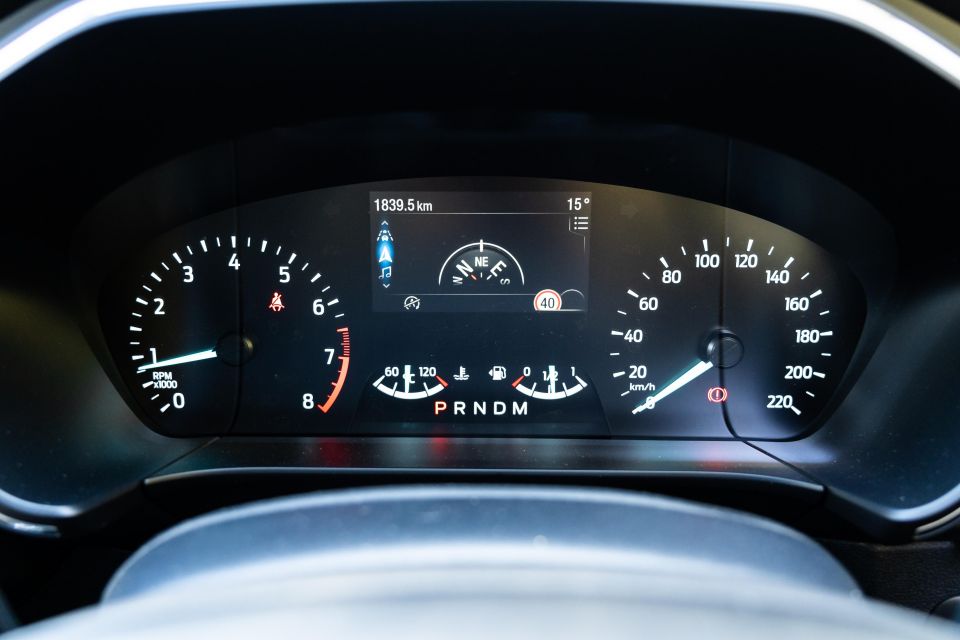

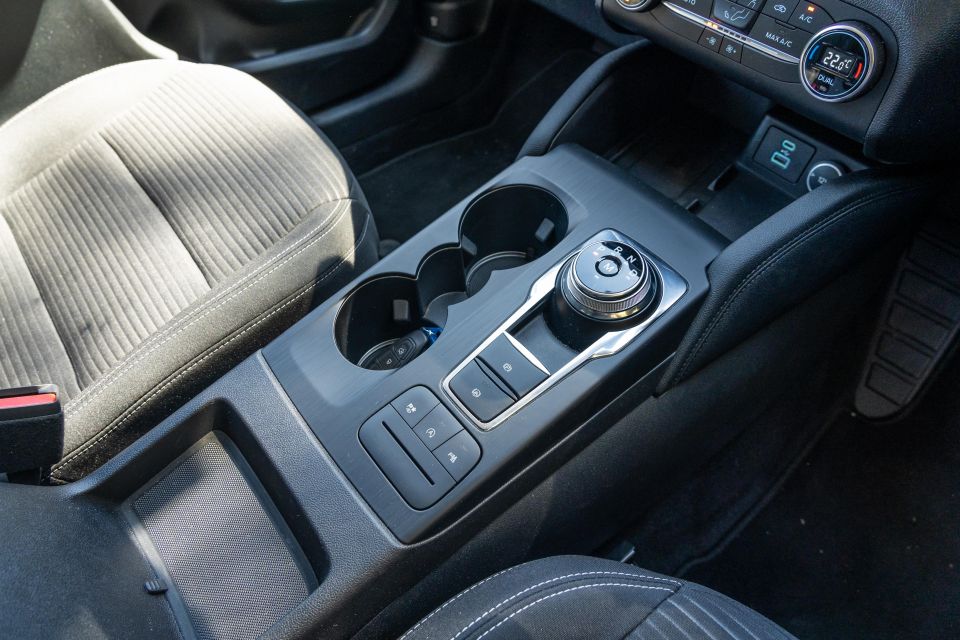
Like other new Ford releases in 2020, the Escape features FordPass Connect allowing for remote functions like vehicle lock/unlock, start and locator via an app. Additionally, traffic updates for the inbuilt satellite navigation are net-based rather than radio for quicker and more accurate information, whether it’s the markings on the map or adjusting routes to avoid traffic.
Ahead of the driver, there’s conventional analogue instruments with a TFT readout for the trip computer and driver assistance functions. Unfortunately you can’t option the swish new 12.3-inch digital instruments from the ST-Line and Vignale, which is a shame because it’d form a good addition to the Technology Pack.
Personally, I find the standard gauges a little cheap-looking irrespective of their clarity and simplicity. It’s the same set of instruments you’ll find in the Transit van and Fiesta light hatch. Could be better.
Under the centre stack is a cubby big enough for a large smartphone, also housing the Qi-standard wireless phone charger. We found the charger had a bit of trouble reliably charging my iPhone 12 Pro Max sans cables, but hooking up my phone to Apple CarPlay via USB was an easy and seamless experience.
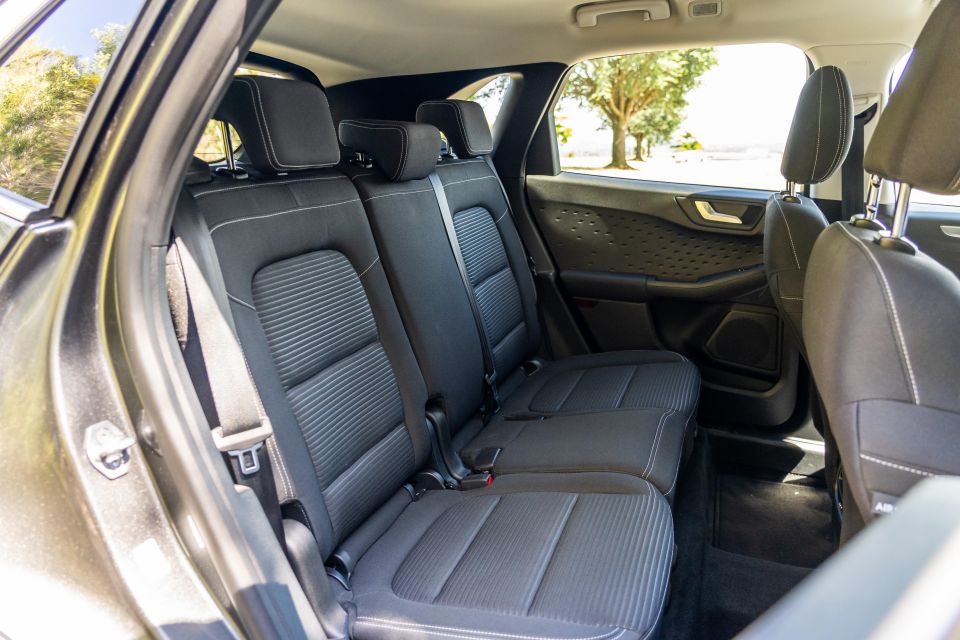
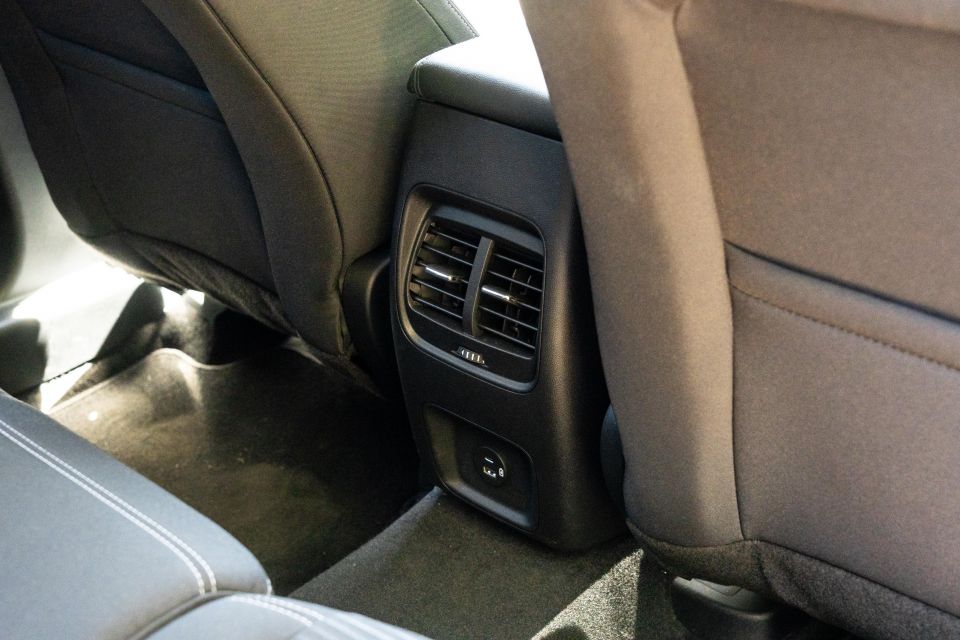
Moving into the second row, you reap the benefits of the new ‘C2’ architecture shared with the current Focus small car. The Escape has grown significantly to offer claimed “class-leading” rear occupant space.
It’s no secret the previous model was a little on the smaller side for the medium segment, but there’s no disputing the latest Escape has more than enough room for kids and adults alike, even behind taller drivers. Standard ISOFIX mounts on the outboard rear seats and top-tether points across all three positions mean the littlest ones are catered for, too.
There’s air vents in the second row, as well as map pockets behind both front seats, bottle holders in the doors and two USB outlets – one USB-A and one USB-C – to charge mobile devices. However, the base Escape lacks a fold-down centre armrest.

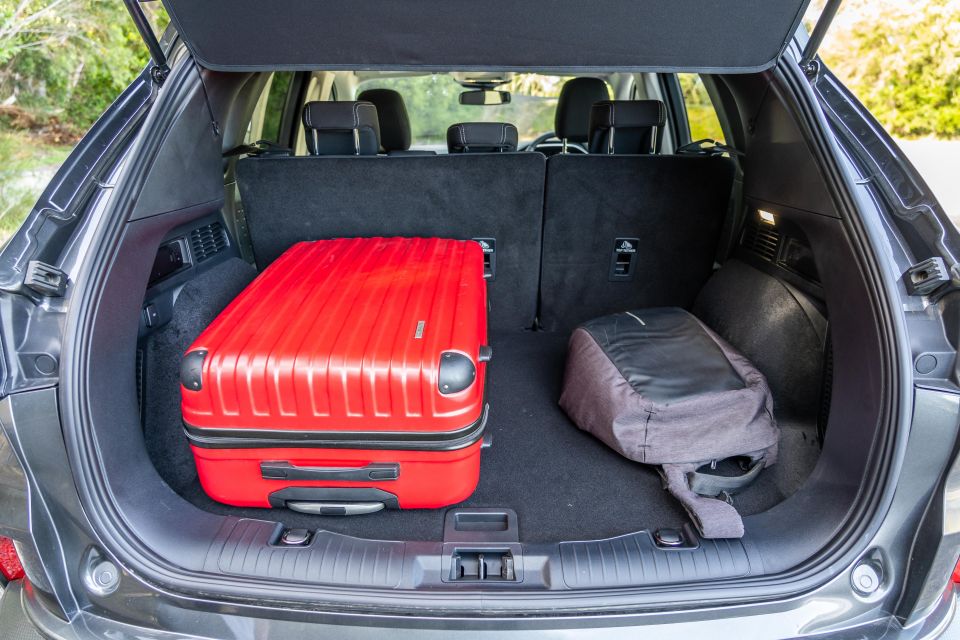
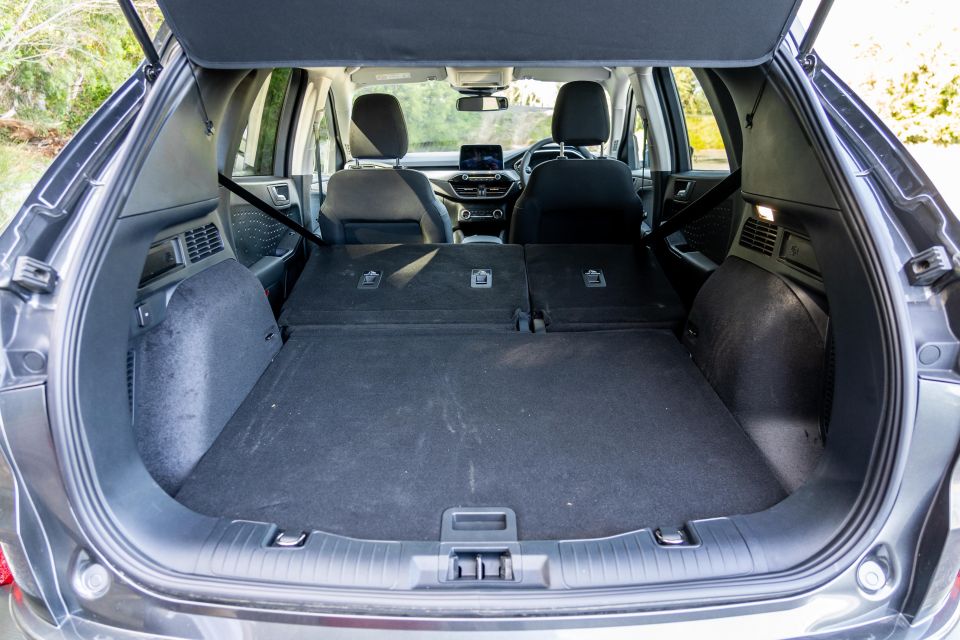
Behind the rear seats is a 556L boot area (laden to luggage tray) which is competitive within the segment. Fold the second row down and you’ve got 1478L to play with.
For reference, the top-selling Toyota RAV4 offers 580L behind the second row (though doesn’t quote a maximum figure) and the popular Mazda CX-5 claims 442L/1342L.
The boot area also features an additional 12V charge outlet and releases for the rear seats which is handy. Under the boot floor there’s a space-saver spare wheel.
For added ease-of-use, there’s an optional electric tailgate with gesture control. The Escape’s rear door is a little on the heavier side and raises quite high, so it could be a worthwhile expense.
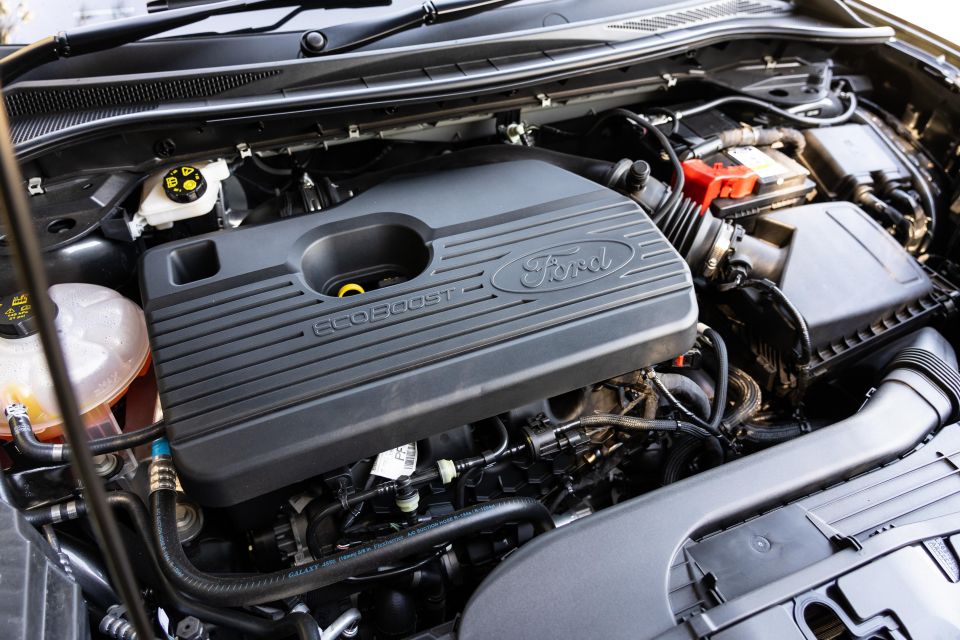
Despite our Escape coming from the Spanish factory that produces the European Kuga, the Australian model is fitted with an engine reserved for the North American market.
Under the bonnet is a 2.0-litre ‘EcoBoost’ four-cylinder turbo petrol, outputting a muscular 183kW at 5700rpm and 387Nm at 3100rpm.
Drive in this variant is sent to the front wheels via a standard eight-speed automatic transmission – accessed via a rotary dial similar to some Jaguar Land Rover products.

It’s a similar engine to the one used in the previous-generation Focus ST, which made 184kW and 340Nm from the same displacement, but was manual only. The old Escape also offered a similar motor also, though in the auto-equipped crossover the four-pot turbo made 178kW and 345Nm.
In addition to the revised outputs – in particular the additional 42Nm of torque – the new eight-speed auto is a key change for the latest model, adding two extra cogs over the old six-speeder. There’s paddle shifters on the steering wheel, too.
While the seventh and eighth gears should help reduce fuel consumption, Ford’s official claim of 8.6L/100km is identical to the outgoing model. Like before, the 2.0-litre motor is fitted with idle stop/start technology.
Using the official claim as a guide, you should be able to achieve around 650 kilometres per fill of the 57-litre fuel tank. The Escape also requires 95 RON premium unleaded as a minimum.
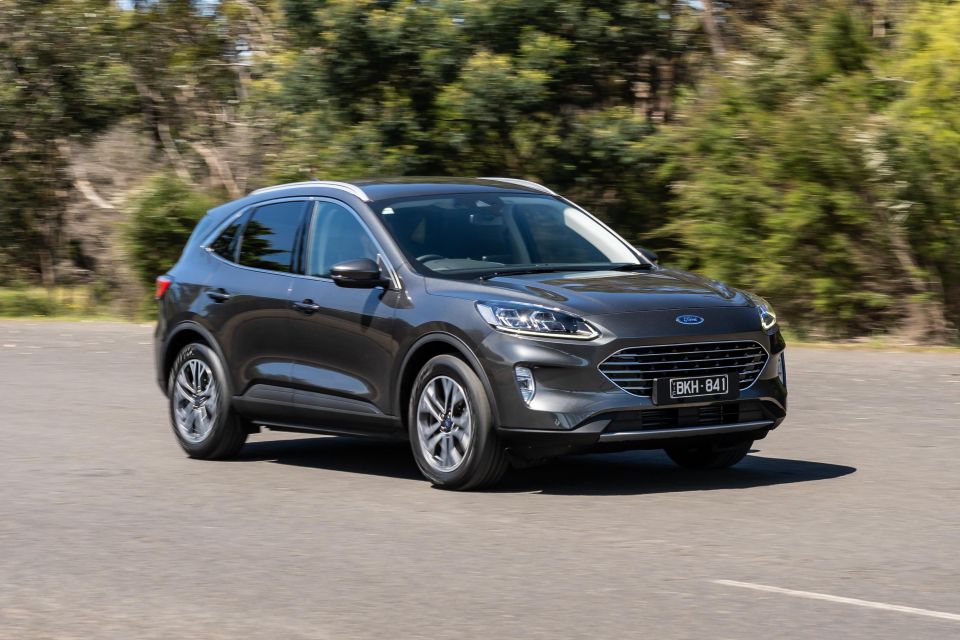
Where expert car reviews meet expert car buying – CarExpert gives you trusted advice, personalised service and real savings on your next new car.
Fords are usually pitched as driver-oriented vehicles, though historically the Escape is a little softer than say, the Focus on which it’s based.
That’s very much the same story still, as the Escape – at least in base trim – focuses on delivering a comfortable, refined and “everyday effortless” drive with a dash of athleticism.
As noted by Curt in his launch review of the ST-Line FWD, the high driving position isn’t what you’d call ‘sporty’, and the steering feel has been really loosened compared to the sharp, quick rack on the Focus.
That said, the 2.0-litre turbo is so strong right across the rev band it brings the best of petrol and diesel worlds – free-revving power and that muscular wave of mid-range torque. Unfortunately Ford hasn’t done much to make it sound good, so under heavy throttle you get a muted, buzzy engine note with a bit of turbo whistle.
Initially I thought having so much grunt sent to just the front wheels may not be the best idea, especially in the wet, but the Escape demonstrated a level of all-round confidence that would really make you reconsider whether all-wheel traction is worth the step up to an ST-Line AWD ($41,990 drive-away).
Peak torque comes in a little higher than most modern turbo petrols at 3000rpm, but that also means you don’t get a sudden surge off the line which would usually spin the front wheels into a frenzy. In fact, we found the Escape did an admirable job of getting its power down across a variety of weather conditions, even with its chubby 225/60 R18 Continental PremiumContact 6 rubber.
While Ford doesn’t quote an official 0-100 time, we’ve heard reports of US models with the same engine hitting 60mph (97km/h) from a standstill in the 6.0-second bracket – that’s hot hatch quick. By the seat of the pants, it certainly has more than enough performance than the average customer is going to need.
That means the Escape excels on the open road, effortlessly accelerating to Australia’s relatively slow 100km/h speed limits, and rolling acceleration is nothing short of fantastic. The Escape would make a fine tourer on rural highways where you have to cross over the dotted lines to overtake trucks and the like.
Ford’s in-house eight-speed auto generally shifts smoothly and intuitively, but can occasionally be a little shunty when shifting from first to second and, like my experience with the Focus, the paddle shifters are painfully slow to upshift. At least the shift-by-wire rotary dial doesn’t take an eternity to shift between Drive and Reverse, like we’ve found with earlier examples of this feature.
Refinement is pretty good across most situations, too. At speed the engine is hushed and barely ticking over 1700rpm at 110km/h. In town there’s good insulation in the cabin to keep engine noise at a minimum.
Road and wind noise are likewise well suppressed, likely helped by the chubby tyres on this variant. The Escape feels planted and sure-footed on the freeway, likely a result of its connection to Europe and its higher highway speed limits.
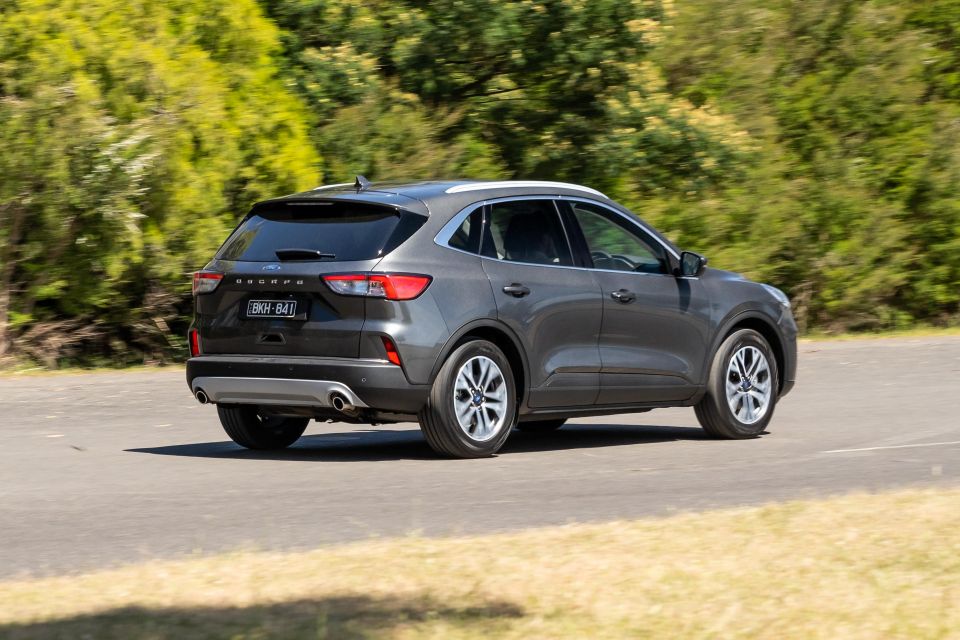
In fact, most of the drive experience feels quite European. The ride errs on the side of firm but is well damped and doesn’t crash over sharp hits, and the steering is fluid and direct while being quite light. We think it could use a bit more feedback about centre, though, because it can be a little numb.
Cornering is quite sharp despite the steering feel. We took the Escape on a lengthy drive down to Arthur Seat on the Mornington Peninsula, which included some high-speed winding back roads through Red Hill. The Escape handled admirably and felt more like a big hatchback than a high-riding crossover.
Outward visibility is great and the suite of driver assists is welcome. I didn’t quite dislike the active lane centring like Curt, nor did I find any of the Escape’s active safety systems too intrusive.
In fact, I personally favour Ford’s latest systems over most of the competition. Some rivals tend to be too vocal in the form of beeps and bongs, and the new Korean models in particular with lane centring can tug at the wheel a little too violently which can give you a fright.
The Escape’s lane centring function is also solely linked to the adaptive cruise system, so it’s not annoying you on suburban roads either.
Speaking of the Escape’s adaptive cruise control system, it worked really well, and the stop/go function is really handy if you commute regularly in freeway traffic jams. Standard blind-spot monitoring and rear cross-traffic alert are also handy features to have, especially when some rivals require you to pay for the flagship grade for the tech.

Like the wider Ford range, the Escape is covered by a five-year, unlimited-kilometre warranty. The Ford Service Benefits program also includes roadside assistance through complementary auto club membership, satellite navigation map updates, and capped-price servicing.
Scheduled maintenance is required every 12 months or 15,000 kilometres, whichever comes first. Each visit for the first four years or 60,000km is capped at a competitive $299 – totalling $1196 for the life of the program.
It’s certainly on the lower side of the segment in terms of ongoing costs, though it can’t match Toyota’s sharp $215 services for the RAV4, regardless of petrol or hybrid. The CX-5, however, will cost around $1402 over four years and also has shorter 10,000km intervals. Food for thought.
As for real-world fuel economy, we managed an indicated 7.7L/100km over a mix of city and highway driving, including a long freeway stint on a return trip from Melbourne to the Mornington Peninsula.
Given the power on offer, it’s not a bad result.
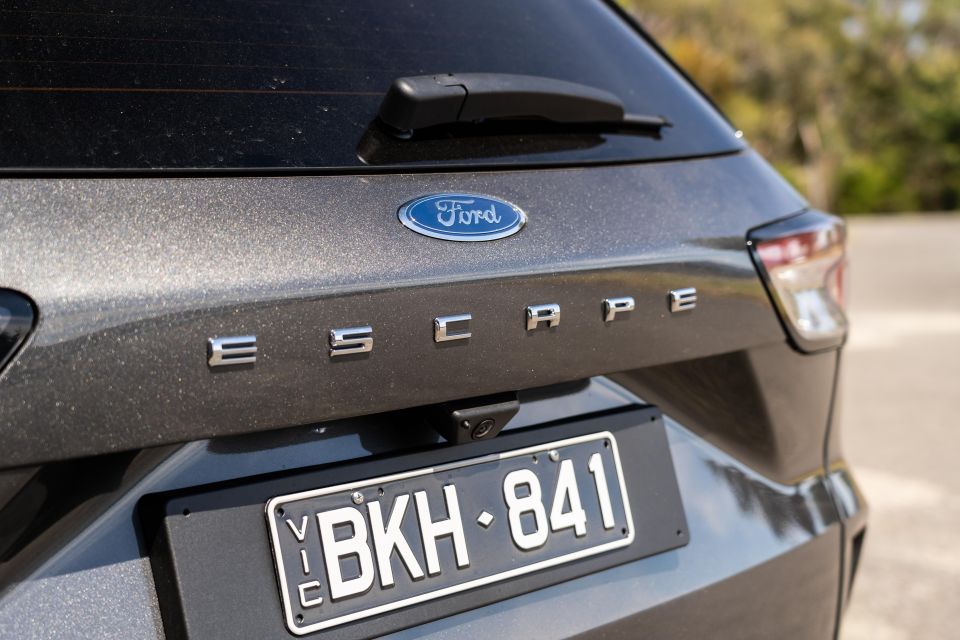
Ford deserves to do well with this latest Escape – in fact it deserves to do well with most of its current products. The brand’s Euro-sourced models (Escape, Focus and Puma) are all excellent cars.
Compared to top-selling rivals like the Toyota RAV4 and Mazda CX-5, the Escape blows them out of the water for performance, and offers a competitive aftersales program to rival the Koreans.
It’s also much larger now to the point where it’s one of the best in class for rear-seat accommodation, and it continues to offer a level of open road refinement and sure-footedness you’d expect from a European car.
Should you be in the market for a medium SUV and you’re happy to not follow the crowd, the Escape should definitely be on your shortlist.
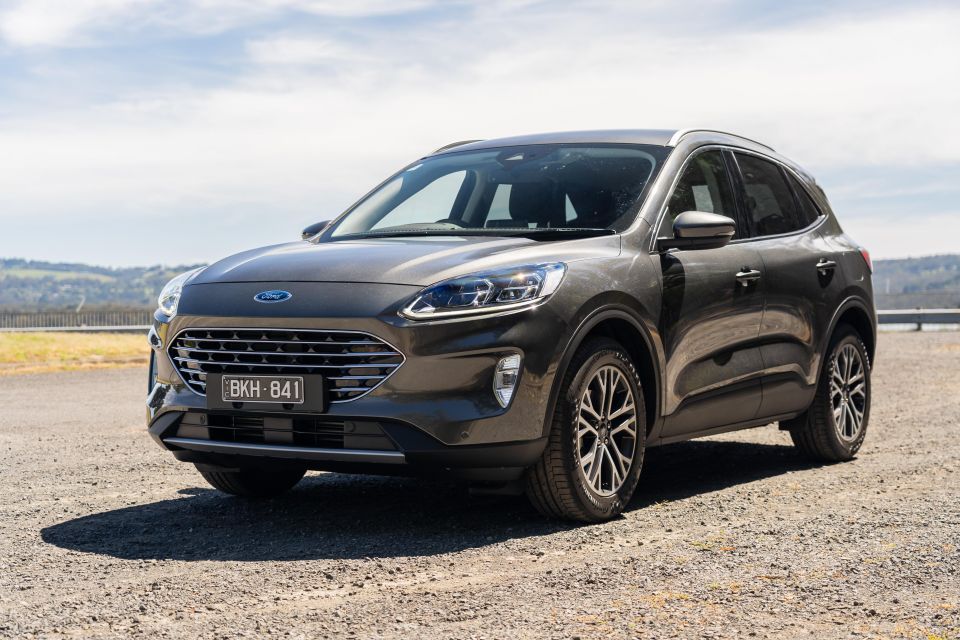
MORE: Ford Escape news and reviews MORE: Ford news and reviews
Where expert car reviews meet expert car buying – CarExpert gives you trusted advice, personalised service and real savings on your next new car.
James is an automotive journalist based in Melbourne, Australia. Before joining CarExpert.com.au in 2020, James has worked at leading auto media outlets including Carsales and CarAdvice, as well as at Pulse agency for Ford Australia's communications team. In 2019 James made Mumbrella's 'Top 20 most prolific web authors in Australia' list after publishing 1,360 articles between March 1, 2018 and February 28, 2019 for CarAdvice. James is also an Ambassador for Drive Against Depression – an Australian charity whose mission is to support mental wellness through the freedom of driving and a shared love of cars.


Matt Campbell
6 Days Ago


James Wong
5 Days Ago


Max Davies
3 Days Ago


Josh Nevett
2 Days Ago


Josh Nevett
2 Days Ago


Paul Maric
20 Hours Ago